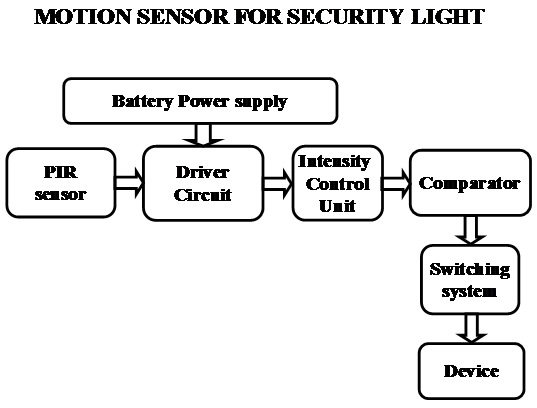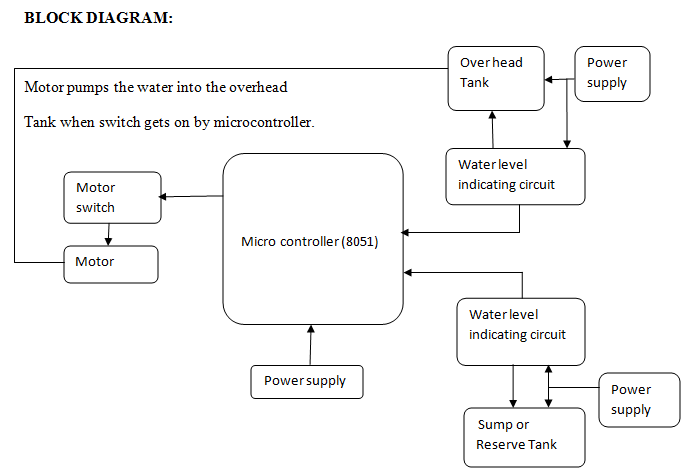The Motion Sensor for Security Light system uses Passive infrared sensor. These sensors are capable of sensing the presence of human being and post the same to the comparator IC. Now the micro comparator takes the responsibility of processing and judges the status of individual appliances and there by controls them using switches like relay, TRIAC.
The most important thing to be noticed here is the system is aimed for industrial, home, firm needs. So, there may be very high voltage devices like ACs and very low voltage devices like High intensity LEDS. Due to the presence of different appliances of different power ratings the design of the interfacing circuit should be done with utmost care.
Features:
1. Controlling the status of different electrical appliances
2. Live detection of human presence.
3. Low power consumption.
4. Reliable for industrial and domestic needs
5. High sensitivity.
The project focuses on the following areas:
1. Characteristics of PIR sensor.
2. High voltage device controlling.
3. Intensity controlling technique.
4. Embedded C program.
5. PCB design.
The major building blocks of this project are:
1. Regulated power supply with voltage regulator.
2. Micro controller.
3. Passive Infra Red Sensor (PIR).
4. Industrial appliances.
5. TRAIC boards.
Regulated power supply:



